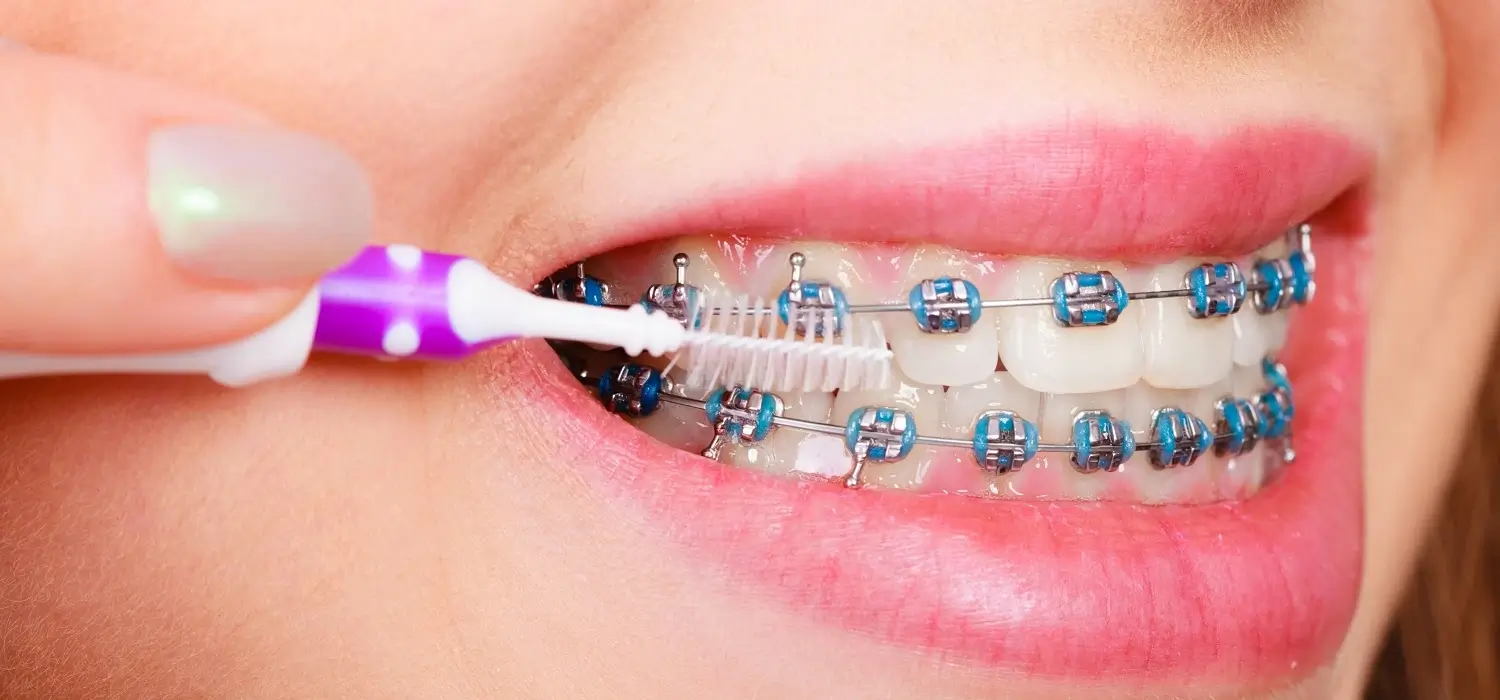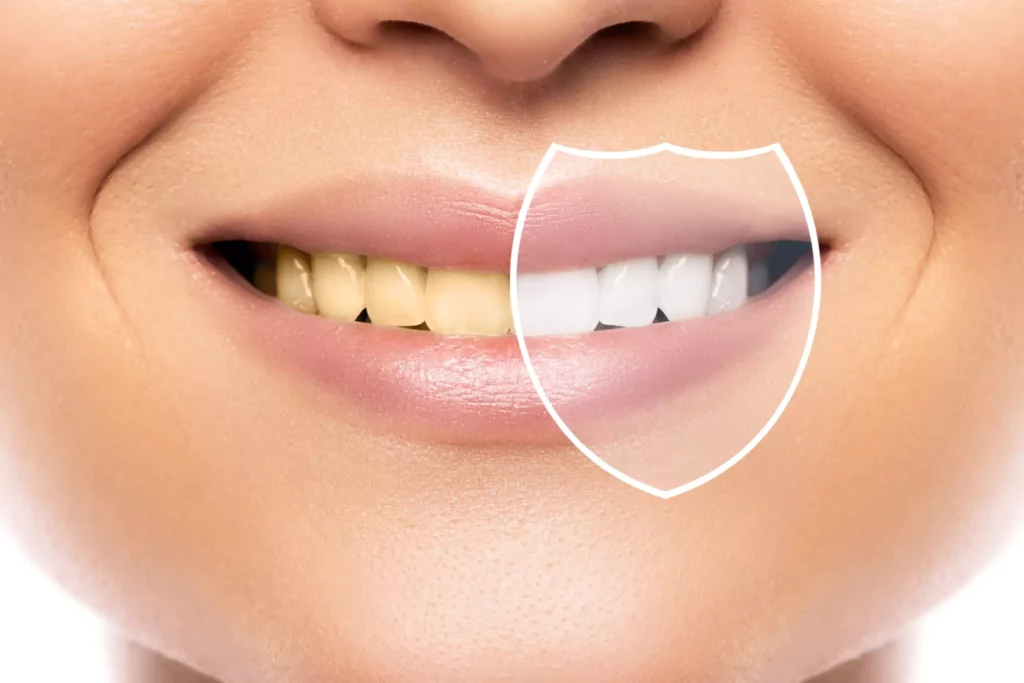Cavities Caused By Braces: Symptoms And Healthy Tips
Orthodontic treatments allow us to correct various dental problems. Dental misalignment, crowding of teeth, an inadequate bite, or opening space for required implants are issues needing attention.
In the field of orthodontics, brackets are inserted to straighten crowded teeth and improve their alignment, while also correcting interdental spaces and an inadequate bite.
However, these treatments may entail collateral consequences that must be known before the procedure, as well as the different options available to reduce the adverse impact.
The most frequent side effect in people who receive orthodontic treatments with brackets is dental caries.
What are Dental Caries?
The consumption of foods with a high sugar index coupled with inadequate dental hygiene makes it easier for food residue to mix with the bacteria in the mouth, favoring the formation of plaque due to the proliferation of bacteria.
The acid produced by bacteria perforates the tooth enamel and creates holes in the surface. This hole is defined as dental caries.
If dental caries are not treated in time, it can lead to an infection of the root of the tooth, and more complex procedures will be needed, such as root canal treatment or even the extraction of the tooth.
Tooth decay can develop into a more complex abscess, gum disease, and even a jaw problem.
The presence of dental caries has been a persistent public health issue throughout history, affecting people from ancient times to the present day. It is estimated that cavities have impacted approximately 90% of the global population, leaving only a small minority immune to this dental condition. In addition, it should be noted that even the wisdom tooth hole never closes, further emphasizing the long-lasting consequences of dental caries.
How can Braces Cause Cavities?
Brackets and other devices used in orthodontic treatments facilitate the accumulation of food debris and bacteria. In addition, they make dental cleaning and oral hygiene difficult, engendering a greater possibility of forming bacterial plaque and dental caries.
On the other hand, these devices cause the demineralization of dental enamel and inflammation of the gums, two conditions that affect dental health, promoting greater vulnerability to bacteria, dental caries, and gum disease.
However, the different therapeutic alternatives of dentistry allow the application of oral hygiene procedures and practices that can reduce this impact and avoid cavities caused by braces.
What are the Symptoms of Cavities Caused by Braces?
When you undergo orthodontic treatment, you have a greater predisposition to dental caries. Some of the signs that alert the presence of this type of dental injury are:
1. Severe tooth pain.
2. Increased dental sensitivity with acidic, hot, or cold foods.
3. Holes or cracks in the teeth.
4. Pain or pressure when chewing.
5. Stains on the teeth.
Dental Hygiene and the Use of Braces
When receiving treatment with brackets, it is essential to perform meticulous and frequent oral hygiene.
1. Teeth brushing should be done after each meal, with a soft bristle brush to avoid gum injury. Brush each tooth in detail, a process that will require more time than routine brushing.
2. The brushing must be soft so the movement does not affect the supports and bands of the orthodontic device.
3. The use of dental floss is recommended to remove food debris that may accumulate between the teeth.
4. If flossing is difficult, an interdental brush can be used to remove food debris trapped between the bracket and the teeth.
5. Using a water dental irrigator (Waterpik) helps achieve a more detailed cleaning.
6. Applying a mouthwash allows for the food remains and microorganisms. If the rinse contains fluoride, it will help remineralize the teeth.
A Healthy Diet Helps Reduce Cavities Caused by Braces
To prevent dental injuries during orthodontic treatment, it is relevant to consume a balanced diet. These are some suggestions useful to maintain good oral health with the use of orthodontic devices.
1. Cut fruit into small pieces to facilitate intake.
2. Do not consume sticky or hard foods such as peanuts, almonds, popcorn, or caramels, among others.
3. Avoid sugary foods. These facilitate the accumulation of bacterial plaque in the supports of the brackets.
4. Do not bite pens, pencils, your fingernails, or other hard objects. This can affect the stability and position of the brackets.
If Braces are Used, What is the Treatment for Caries?
When braces are used, the treatment of dental cavities is more complex, but not impossible.
Generally, decay occurs between the crevices of the teeth near the brackets.
In some cases, the procedure requires the removal of the bracket to facilitate the treatment of cavities. The brackets will be reinserted in the shortest possible time to avoid affecting the results of the orthodontic treatment.
Fluoride treatment
Fluoride is a mineral that contributes to the remineralization of dental enamel to reduce the incidence of dental caries. It is frequently used in dental treatments and is found in products designed for use in oral hygiene.
This is the reason fluoride drinking water is available in some cities as a measure to mitigate the prevalence of this oral pathology. This prevention practice is seen in Germany, the United States, Spain, the Netherlands, and Sweden, among other countries. Elsewhere, fluoride is added to consumer products such as salt and milk.
In orthodontic treatment with brackets, applying fluoride to the teeth helps prevent dental caries.
Some of the products that may contain fluoride in their composition are:
• Some toothpaste
• Some brands of dental floss
• Mouthwashes and gels
• Cement and fillings are used to make dental fillings.
However, excess fluoride can lead to dental fluorosis, with side effects on the bones and joints due to changes in bone structure.
Why is it Necessary to get Regular Check-ups?
During orthodontic treatment, it is important to have regular check-ups with the treating dentist to follow up on the evolution of the procedure and identify any symptoms of dental injuries on a timely basis that may lead to more complex oral health conditions.
In addition, during these control consultations, the dentist can adjust the devices and perform professional cleanings to help prevent dental cavities and gum disease.
The Cause of Cavities is not in the Brackets
Consulting with the dentist on the relevant therapeutic option according to the diagnosis will facilitate the design of the treatment plan and offer a better perspective for the success of the procedure.
The side effects of brackets do not suggest that orthodontic treatments are inadequate or irrelevant to correct other oral health conditions, such as misalignment or malocclusion.
These possible situations show the importance of a detailed assessment of the patient’s oral health before starting orthodontic treatment and treating diagnosed problems. At the end of the treatment and the removal of the brackets, another general assessment should be made.
Likewise, recurrent and meticulous oral hygiene, along with regular visits to the dentist for timely follow-up and control as treatment progresses, will reduce side effects and facilitate the expected results.
We also have a comprehensive guide “Does Grinding Teeth Cause Cavities?” that helps you to know more about the causes of dental caries and cavities.
Frequently Asked Questions
Do braces cause more cavities than no braces at all?
No, braces are not the direct cause of tooth decay. However, they do facilitate the accumulation of food debris and bacteria, which increases the risk of plaque formation and thus tooth decay.
Are you more susceptible to cavities after having braces?
Braces provide additional spaces where food particles and plaque can build up, raising the risk of tooth decay and cavities. Wearing braces can increase your risk of developing cavities if you do not maintain strict oral hygiene routines as: Brush after each meal with a soft-bristle brush, use dental floss or an interdental brush to remove food debris, and a water irrigator for detailed cleaning. Use a fluoride mouthwash to aid in tooth remineralization.
How do I prevent tooth decay while wearing braces?
To prevent dental injuries during orthodontic treatment, it is relevant to consume a balanced diet. It is essential to perform meticulous and frequent oral hygiene.
Is it common to get cavities with braces?
Getting braces is an exciting step towards achieving a straight smile. However, the downside is that braces increase the risk of cavities. The appliances attached to your teeth can harbor bacteria and lead to plaque accumulation.
Can braces damage enamel?
Braces won’t harm your teeth on their own. However, neglecting proper oral hygiene while wearing braces can damage your tooth enamel. It’s crucial to brush your teeth at least twice a day, and ideally, after every meal, even when you have braces.
Share:
References
1. National Institute of Dental and Craniofacial Research (April 2019) Dental caries. https://www.nidcr.nih.gov/espanol/temas-de-salud/la-caries-dental
2. Mayo Clinic (May 19, 2022) Tooth Decay – Symptoms and Causes. https://www.mayoclinic.org/es-es/diseases-conditions/cavities/symptoms-causes/syc-20352892
3. Sandoval Yuliana (January 30, 2023). Dental caries: types, causes, symptoms, diagnosis and treatments. https://www.dentaly.org/us/tooth-decay/https://www.dentaly.org/es/odontologia-general/caries/
4. Assatourians, G, DDS. (Apr 3, 2023). Cavities Caused by Braces: 3 Other Problems from Brackets. https://cidentist.com/cavities-caused-by-braces/
-
Nayibe Cubillos M. [Author]
Pharmaceutical Chemestry |Pharmaceutical Process Management | Pharmaceutical Care | Pharmaceutical Services Audit | Pharmaceutical Services Process Consulting | Content Project Manager | SEO Knowledge | Content Writer | Leadership | Scrum Master
View all posts
A healthcare writer with a solid background in pharmaceutical chemistry and a thorough understanding of Colombian regulatory processes and comprehensive sector management, she has significant experience coordinating and leading multidisciplina...



















